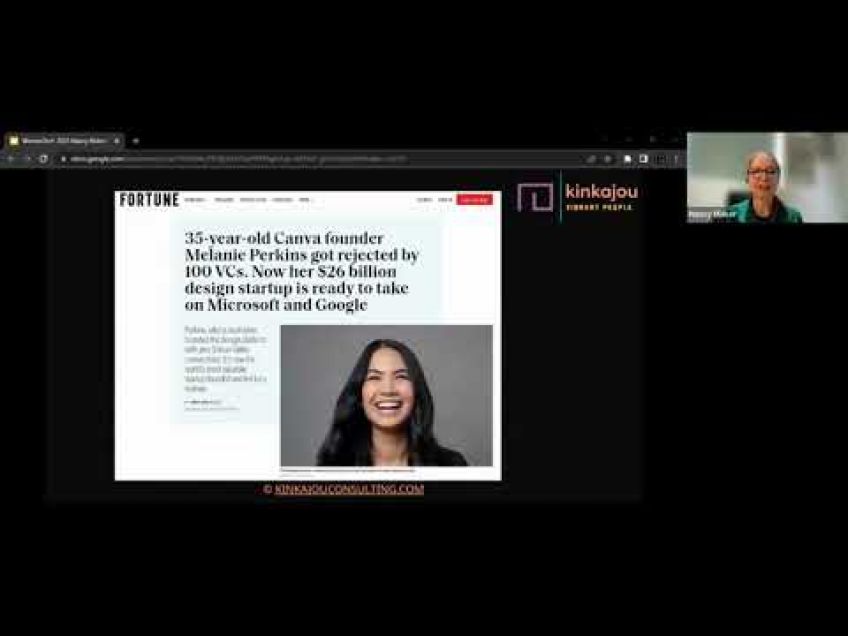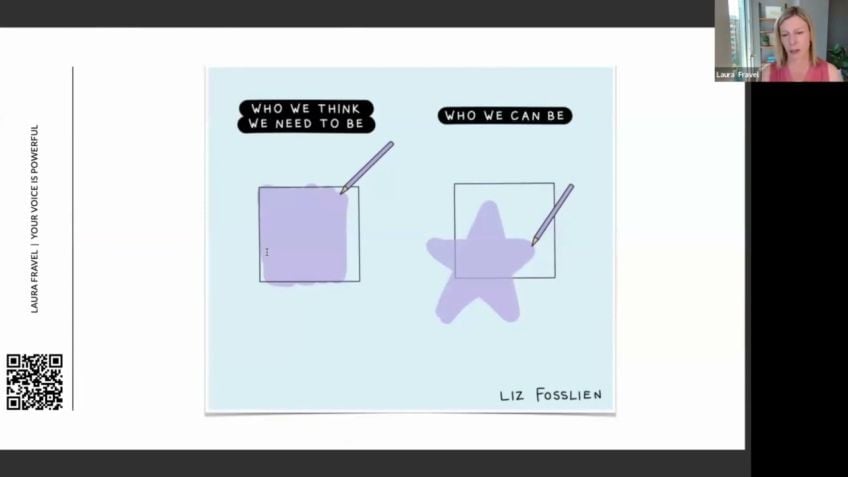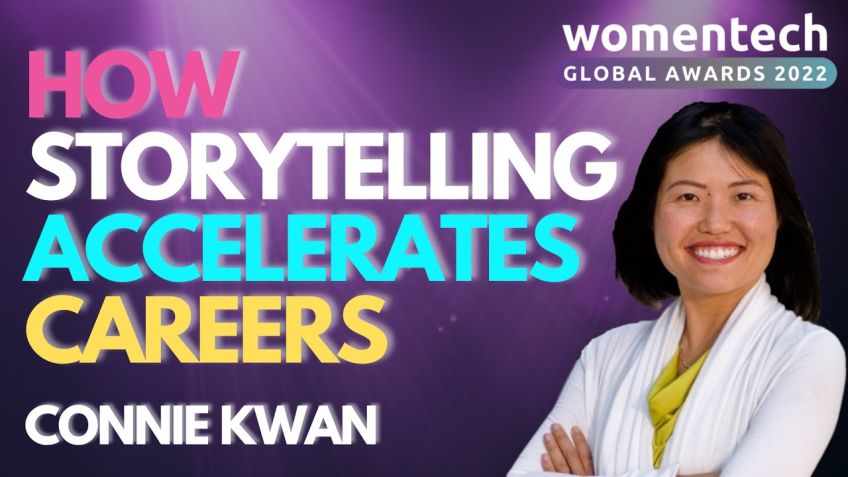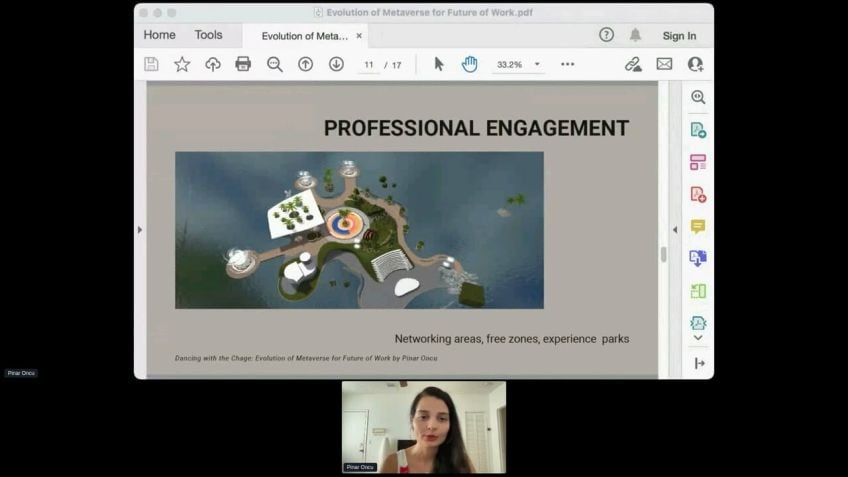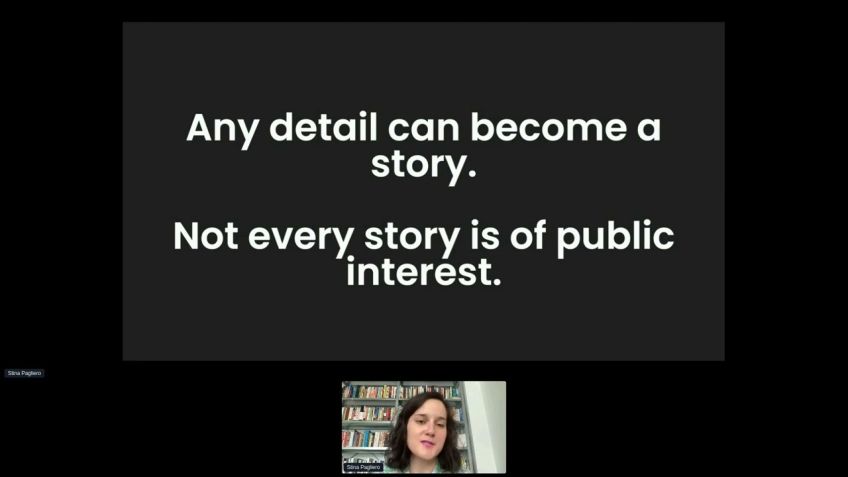Your audience is bored: The antidote is to tell a story by Naba Ahmed
Moody's Journey: From Political Prisoner to Doctor to Local Guardian
The power of storytelling lies in its ability to inspire us to overcome adversity. Take, for example, the story of Moody—once a political prisoner, then an impromptu prison doctor, and now, a guardian to children affected by poverty and drugs.
Moody was born and raised in a war-torn communist state where narcotics were easier to secure than food. Despite this harsh environment, he dedicated his life to supporting and uplifting others, which led him to a career in teaching. Yet, in 1990, he experienced a major setback: he was imprisoned for using and selling opium. Despite his daunting surroundings and lack of medical experience, Moody transformed himself into a medical provider for 500 inmates.
Post prison, Moody sought refuge in Northern Thailand, where he'd continue his benevolent efforts. Today, Moody, though 90% blind, dedicates his life to running a dormitory for children affected by poverty and drugs. The journey of Moody embodies the resilience of the human spirit, which makes the tale not only a captivating one but also a testament to the power of determination.
Storytelling: A Powerful Tool In Engaging Content Writing
A story presents an opportunity for us to connect with our audience and maintain their attention throughout. This article provides storytelling principles that can be applied not only to presentations but also to our regular, virtual and hybrid meetings.
Let's delve into an essential point—the aim framework—that comprises audience, intent, and message. Using this framework will help you connect with your listeners and make your presentations much more engaging.
The Importance of Storytelling
- Audience: Focus on who your audience is and what it cares about.
- Intent: Structure your presentation around what you want to convey to your audience.
- Message: Make your discussions focus on how your experiences will benefit your audience or your company.
The AIM framework helps everyone—whether you're a student, a professional giving a TED Talk, or a CEO—craft and present the perfect story. In the words of Elena Valentine, CEO of Scout Films, "a good story makes us human".
Storytelling Elements—The ‘CAR’
To make any presentation engaging, incorporate the elements of storytelling—creativity, authenticity, and relevance or what I like to refer to as CAR.
Creativity: You need not be a master designer to be creative; presenting your story in an interesting way can keep your audience engaged. For example, author Tim Urban effectively used stick figures in a TED Talk.
Authenticity: Presenting personal experiences can make your storytelling more effective. Sharing a personal story not only builds credibility but also allows you to connect deeply with your audience. Take, for example, Sheryl Sandberg’s commencement speech at UC Berkeley, where she shared about her husband's demise.
Relevance: Your story should be related to your presentation to maintain interest. For example, in Amy’s TED Talk, possible prosthetic legs were continuously mentioned to maintain relevance and create cohesion in the presentation.
Applying Storytelling Beyond Just Presentations
Now that we have discussed the significance and elements of storytelling let’s understand how one can apply these to virtual meetings, job interviews, sales calls and more.
Marketers can use storytelling to share how their product can overcome problems while showcasing its unique value. The CEO of Ascend, Shivani Berry, advocates using storytelling to build trust and investment in ideas. Replace boring, standard presentations with interactive, engaging narratives and move beyond just formal presentations.
Wrapping Up
Incorporating storytelling into your presentations and communications not only makes your presentations engaging but also helps you to connect on a deeper level with your audience. Benefit from the three elements of storytelling—creativity, authenticity, and relevance—and let your narrative shine through your presentations!
Remember, as content writers, stories enable us to feel more comfortable, connect deeper, and make experiences enjoyable for our audience. Be it blog posts, social media, or whitepapers, storytelling is indeed a powerful tool in crafting engaging content.
Video Transcription
All right. Well, I think I'm gonna go ahead and get started. It looks like we have a good group now. So I'm gonna kick us off with a story actually.Um So I used to work as a journalist a few years back and during that time, I was covering things like protests, strikes in town halls. But I will always remember the story of this one man. So imagine if this was your life, you are living in a war torn communist state where drugs are easily accessible, but food can be really hard to come by and for moody. The and I it was, he was born and raised in Burma and he started his career as a teacher. This is indicative of the type of person who he was. His life was based around how he could help others despite any obstacles that he had to face. However, in 1990 he was imprisoned for using and selling opium. This still didn't stop moody from helping those in need. Despite having no medical experience, he somehow became the doctor to 500 inmates after his time in prison and almost no change with the government. It got to a point where moody really needed to get out of Burma. So he was escaped and he went to Northern Thailand where his wife had already gone and still his time helping others did not come to an end.
So now he settled in Thailand where he runs a dormitory in way, an kun for Children who were affected by drugs and poverty just as he had been. And on top of that moody is running this dormitory and supporting these Children all while being 90% blind. Not only is Moody's story powerful in sharing perspectives of those around the world, but it also highlights that it's not just about the destination or the resolution of the story, but about the journey itself so that we can see everything that he overcome and how he got to this place.
So this is exactly what makes presentations great. The narrative or the story is what allows us to connect with our audience and maintain their attention throughout. Hello, everyone. Thank you again so much for joining me today. My name is Naba Ahmed and I'm a content editor at Prez I'm so excited to be sharing the importance of storytelling and how you can apply these principles beyond the presentation before we dive into what you're all really here for. I wanted to just quickly share a little bit more about myself. As I mentioned, my name is Neva and I work at Pres a virtual collaboration software where I work closely with influencers and thought leaders to help them create record and live stream pre video content that you see here. I would love to connect with all of you after this session to keep the conversation going. If you have any additional tips, feel free to drop them in the chat during the session, but you can also connect with me on linkedin and send me a note there. All right. Now, let's dive right in. So prior to present, my previous experience had been in reporting and editing, where I saw how effective stories could be for presenting and sharing information and in both of those roles, I've had to give my fair share of presentations.
And now I'll be the first to admit, I'm someone who typically shies away from leading a meeting or presenting in general. So I realized that I needed to change my approach to public speaking in order for me to feel a little more comfortable. And so that's where storytelling came in. It allowed me to connect with others and feel like I was teaching them something with that in mind. We're going to be covering four different areas in today's session. Why storytelling is important, how to format your presentation on a story structure, three elements of storytelling and how to apply storytelling principles beyond a presentation. So you can have more productive and engaging hybrid and virtual meetings. Plus, I'm gonna be sharing some resources for all attendees at the end of the session. So please stay tuned. So let's kick it off with the importance of storytelling. When you're creating your presentation, you want to think of stories as the examples and the evidence that are going to be used to make your point. Storytelling is especially important because it allows us to be more relatable and connect with our audience. Elena Valentine, the CEO of skill scout films sums this up perfectly in this short clip sharing how our brains are hardwired to consume stories.
Our brains are wired for stories. When we hear a good story, we can really place ourselves into that person's situation. We become more relatable to one another and a good story makes us human versus coming off as the expert, which is oftentimes some of the biggest pressure that we have as presenters is being seen as the expert, the all knowing as opposed to saying, hey, you know what? Look I'm human too, I'm just like you. So there's a level of vulnerability. But as a result, you can start to make more connections through that
neuroscientist, Yuri Hassan supports Elena's point through a number of studies he conducted in a lab at Princeton. He concludes that storytelling causes the neurons of an audience to sync with the storyteller or presenter's brain. Therefore, you're more likely to respond to the story with the same emotions that the storyteller or presenter had when they experienced it. So given the power that storytelling can have on our audience. The next step is understanding how to best wield it and integrate it throughout your presentation.
Also, I want to call out, I noticed in the chat, people are asking about a master class on how to do these graphics. What I'm using right now is pre video and I am gonna be sharing some resources for how you can get started and a free gift later on in the session. So there'll be more to come on that. But what I like to do with my presentations is think of it as a narrative in itself and actually structure my presentation on a typical hero's journey. There's a common misconception that all our stories need to be completely new. When in reality, we actually like the stories the most, when we already know the structure and can anticipate where it's going by following the hero story structure. You're gonna be taking your audience on a journey kind of like with moody and also with Amy Purdy who gave a TED talk about how she lost both her legs to meningitis, but then relearned how to snowboard to continue her professional career. Now, if we compare the hero journey structure with Amy's TED talk, we can see exactly how this plays out. The structure tells us to start with all the background information and introduce our hero or our key message. It's important to establish the context pretty quickly.
Or else your audience won't be able to follow you from the start. So in Amy's TED talk, she applies this by providing us with information on her childhood. She shares that she grew up in a desert town and that while she was growing up, she always wished to live in a place where it snowed. And at age 19, she finally did. The story progresses. As we move into the rising action stage, the structure tells us that the rising action is used to highlight the main problem that the hero is gonna face and ultimately have to overcome. Amy shares that one day she got the flu and was in the hospital and life support bacterial meningitis, which led to her losing both of her legs. At this point, the audience will be unsure of the hero's fate, which will continue to reel them in. We know that the story is gonna end well, but we're still intrigued to know how is Amy gonna resolve this. So she decides to get back on her snowboard, but it doesn't come without a lot of difficulties, especially with the type of prosthetic life that she wants. We continue to see our hero in a state where they are trying to overcome something. As we move into the following action, we begin to see some progress on the hero's problem, but it's still not fully resolved quite yet.
For Amy, she's still struggling to choose a prosthetic leg. So she decides to take matters into her own hands. And instead of trying to make a leg match her, she creates new legs for herself and with her new legs, she goes back to school and starts snowboarding again. Finally, we come to the resolution as the name implies, we're at the point where we're wrapping up the story and showing how the character has overcome the problem they were initially presented with. So since Amy began snowboarding with her newly designed legs, she's won two back to back world cup medals, world Cup gold medals and started a nonprofit for young adults with physical disabilities. So while your story does not need to end with you winning a gold medal, you want your audience to be just as excited about your conclusion as they were throughout your entire presentation, which can be achieved by following the structure of the story. But your presentation will only be as good as the story you're sharing. So with that, let's discuss the three storytelling elements you need to incorporate into all your stories, creativity, authenticity and relevance, which I like to think of for easy reference as car. So let's dive into how these three elements can be used to strengthen your presentations. Creativity plays a huge role in your presentation.
But what many people forget is you don't need to be a master designer in order to be creative, how you deliver and present your story can be incredibly impactful in keeping your audience interested and engaged for one of his TED talks author, Tim Urban uses stick figures and a monkey in order to explain procrastination.
So while a well designed presentation will play a role in how your audience consumes the information, it's really not the most important factor. As long as your presentation is used to supplement your story and complement your delivery. You don't need all the bells and whistles.
I do want to point out though that while this shows you don't need expert designers, visuals can still have an impact. So my pro tip is that the easiest way to prevent your audience's eyes from glazing over is to incorporate some sort of visual content. So it can be a few images, it can be some stick figures like Tim did or even just some short bullets. I've already touched a bit on the importance of authenticity as stories allow space for human connection and emotion. But personal experiences can really help take your storytelling to the next level. It can take a lot of courage to share personal stories, but it will give you a lot of credibility in a commencement speech at UC Berkeley in 2016, Sheryl Sandberg, she shared for the very first time how she felt on the one year anniversary of her husband's death. She built up credibility and trust by confiding in the audience, which also allowed her as a presenter to feel more connected to them. While this element requires the most courage it will generate the biggest reward. Of course, you want your story to be relevant to what your presentation is about. But it's also useful because it gives you room to reference your story throughout your presentation.
In Amy's TED talk, she continuously brought up how she wanted to become a professional snowboarder, which motivated her to keep working towards her goal, having this overarching story or theme to constantly refer back, refer back to creates cohesion and will help maintain interest.
Another example is from Sean Aker who starts off his presentation with a story about a unicorn from his childhood. Now I'm not gonna spoil his entire TED talk, but as he moves through it, he references how he used the same process of convincing his sister that she was a unicorn to reframe his thinking at work. And one of my favorite stories that puts all these elements into play is from my manager, Loraine who talks about her journey into public speaking. She talks about how she was really nervous at even the thought of public speaking that after putting herself out there, she now has regular speaking gigs and has been named a top virtual keynote speaker in her story. She incorporates these three elements. So for creativity, we can see she has some gifts and some cut out designs to allow us to visualize and follow along with her as she prepares to go into the Empire State Building for her speaking gig. She's also being very vulnerable with the audience by sharing this personal story. And lastly, she incorporates relevance because at one point or another, most people have felt some level of uncertainty or nervousness before public speaking.
She's also sharing how to be more confident and competent on video by sharing how far she's come on her own journey. Storytelling is also very different in person versus a virtual setting. Virtually, you're missing the live audience to give you energy and there can be so many distractions.
So we're always fighting to keep our audience's attention, which is why the three elements we discussed are so essential to crafting a story that will draw your attendees in. So let's move into our next section, how to apply storytelling principles beyond the presentation because stories shouldn't be reserved for just formal presentations like this or TED talks. Everything I've discussed today can be applied to your daily meetings, sales calls, product demos and more.
We want our audience no matter how small they are to be engaged with their presentation. But first, let's set the scene. Most virtual presentations, whether it's events, webinars or meetings tend to look like this where speakers in a tiny because their sc screen sharing and their slide deck just takes over. And because of that, most people are experiencing video conference fatigue and they're tired, they are tired of seeing the same slides over and over again. We have also found that meeting over video is just not quite the same as meeting face to face. Our brains have to work harder to pick up on these non verbal cues. And since most attendees have their mics turned off to decrease background noise or it's a setting like this where I can't even get to talk to you. It can feel like you're just speaking into a void. I also see myself staring back, which can just make me more self aware than I would be if this were in person. Therefore, it's so important to overcome this by making your meetings more interactive and engaging by you guessed it, weaving a story into it.
Shivani Barry Ceo and founder of women's leadership program ascend, shared a linkedin post outlining how to get your team to support and get invested in your ideas, which can also be applied for things like job interviews and just for career growth in general. She recommends using stories to get people to trust your ideas in what you're talking about through the aim framework, audience intent and message. So if this was an interview, here's how you could implement this framework, your audience will comprise of the interviewer and the team, you're hoping to join. What they really care about is how you can be a strong asset to their company. For intent. You want to structure it around what you plan to bring to the company and essentially sell your experiences through the stories and for message you want to be focusing on one thing, address this question, how will my experiences which will frame the stories that I'm sharing show I'm a strong asset to this company.
Another example of this is with presentation expert and speaker Rich Mulholland who shares how he integrates the hero's journey into every sale, sales presentation and prospect meeting the hero who he refers to as the dragon hunter must wield a weapon to defeat a dragon and retrieve the treasure.
So if we put this in a sales leading context, the customer is the hero and the dragon is the problem in the world that your company can uniquely solve. And the treasure is the opportunity that exists. If you do by uncovering your client's problems, you can actually walk them through the story of your business, which also helps humanize your product and highlight how it can be a solution. So reflecting back on what we know about the hero's journey and how we have seen it played out through this dragon, we see that Amy and Moody were both working to solve a problem. One was trying to take back her professional career and the other was trying to escape Irma and live a better life. Had we not known the trials and the steps they took to get there. We might not have resonated with these stories as much and they wouldn't have been as impactful. So that's why we need to recognize why storytelling is so impactful because it allows us to connect more with our audiences that the hero's journey provides an effective structure for your presentation.
The three elements of storytelling, creativity, authenticity and relevance are key for any presentation. And finally that by using the structure and elements above, you can craft stories to be used beyond a keynote for your virtual meetings or calls with hybrid work and virtual meetings.
We are always on camp right now and stories have really enabled me to just feel more comfortable. So the next time we're working on a presentation and think about how you can incorporate a story into it to not only keep your audience engaged but connect with them on a deeper level and make the experience more enjoyable overall. So thank you all so much before I close out, I do want to share a few more resources like I mentioned, I am using pre video. So if you're interested in trying it out yourself, you can actually try the link pres.com/attendee upgrade and you get a one month free account upgrade and you can try it out exactly how I'm using it. You can use it in live meetings like this and hop in zoom, anything like that. You can also record meetings, you present your notes. So if you have any questions, feel free to reach out to me. And I would also love to hear from all of you. If you have any additional tips, any feedback feel free to connect with me on linkedin. And I also have a feedback form linked to get any of your thoughts as well. But thank you all so much for being here.
I really enjoyed talking to you all and I hope these tips were helpful when you're building out your presentation. And so with that, I'm gonna just take a look at the chat and see if we have any questions. Thank you all so much. I really appreciate your comments and yeah, feel free to connect with me on linkedin. Let me know if you have any other tips. If there are any stories that especially resonated with you always look to hear some feedback. OK. Awesome. Yeah. And I think someone did point it out. But um yeah, Marlow Lauren did give a session earlier today and um feel free to also check that out. I should have actually linked that in here, but she talks about video presence and um her experience working at linkedin. So you should definitely check that out as well. But yeah, thank you all so much. I'm gonna just grab all your links so I can connect with you but feel free to drop me a note or anything. I think we have about a couple of minutes here. So if there are any questions, I know it can take some time just to process all the information. Um So feel free to just like send me a note after the fact as well. Yeah, thank you all so much, I think. Yeah, we're just about at time here. So if anyone has anything else, just feel free to drop it into the chat or just send me a note after this. All right, cool. Well, thank you all so much. Yeah, I'm just grabbing your link so I can connect with you all.
But I hope you enjoy the rest of the women in tech Global conference and thank you to all the organizers for having me here. Thank you so much, everyone and I hope you all have a fabulous day. Bye.

